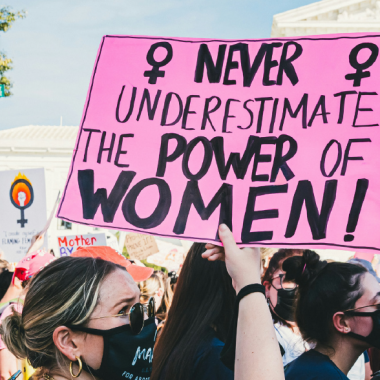On 19 September this year, after a 10-month blockade, history suddenly accelerated for the inhabitants of Nagorno-Karabakh, the Armenian-majority region of Azerbaijan. Three years after the conflict in 2020, which saw Azeri forces, backed by Turkey, clash with those of the self-proclaimed Republic of Artsakh (the de facto governing authority of Nagorno-Karabakh), supported by Armenia, the Azeri army once again launched a military offensive on Nagorno-Karabakh, which ended in a few hours with the total surrender of the autonomous region. An opportunity to see how publications on X reveal the importance of social networks in contemporary conflicts.

Number of publications on X mentioning Armenia, Azerbaijan, Nagorno-Karabakh and the Republic of Artsakh in the last 30 days
OSINT and online influence
On X, with the emergence of numerous OSINT accounts dedicated to conflict analysis, it is possible to follow the progress of events in real time, as well as the promotion of certain revisionist powers, such as Turkey, Russia and Azerbaijan.
6 Azerbaijani citizens, including 2 civilians and 4 police officers, were killed in 2 separate mine explosions in Karabakh today.
Two Azerbaijani soldiers were wounded as Armenia violated the ceasefire. Tension continues in Karabakh.
Azerbaijani TVs changed their broadcast… pic.twitter.com/nvUu0lfn2L
— Clash Report (@clashreport) September 19, 2023
The dissemination of false flags is one example of the opportunities offered by social networks in understanding contemporary conflicts.
In the case of Nagorno-Karabakh, the pro-Turkish and pro-Azeri OSINT account Clash Report (252.4k subscribers) broadcast an attack on the morning of the 19th, killing six Azeris in the process. While it is not certain that this attack was in fact a disguised operation by Azerbaijan, it was used as a pretext to launch a large-scale anti-terrorist operation – or rather a final offensive to drive the Armenians out of Nagorno-Karabakh.
Just four minutes after the publication of the Clash Report tweet, neutral and pro-Armenian OSINT accounts began posting videos from Stepanakert, the capital of Nagorno-Karabakh, in which bombardments, sirens and the characteristic sound of Israeli Harop drones, which played a large part in the success of the Azerbaijani forces in 2020, can be clearly heard.
The immediacy and virality of this content illustrate all the ways in which information can be manipulated in today’s conflicts.
Stepanakert now… pic.twitter.com/2G8X6VO8my
— Marut Vanyan (@marutvanian) September 19, 2023
Un conflit qui révèle une fracture dans la classe politique française
Mais cette instantanéité et viralité est aussi à l’origine de l’écho tout particulier que reçoit le conflit dans les pays occidentaux du fait de la grande diaspora arménienne, notamment présente aux Etats-Unis, en Russie et en France. De fait, les tweets les plus engageants sur l’Arménie, l’Azerbaïdjan et le Haut-Karabagh sont ceux de personnalités publiques prenant positions en faveur de l’Arménie :
😔🙏🏼♥️ https://t.co/SafdjXCmaU
— Olivier Giroud (@_OlivierGiroud_) September 29, 2023
We are sharing our recent Op-Ed again for background information. Sadly, the potential for genocide of Armenians Artsakh/Nagorno-Karabakh is worse now because of full-scale attacks by Azerbaijan on the civilian population after months of blockade & starvation. We appeal to the US… https://t.co/vwzrq2FQUY
— Kim Kardashian (@KimKardashian) September 20, 2023
In France, the conflict is particularly highlighted by government, right-wing and far-right figures, the latter showing solidarity with the Christians of the East. The most influential influencer on the situation in Nagorno-Karabakh is Jean-Christophe Buisson, a journalist at Le Figaro, who over a period of thirty days published 223 tweets on the subject, with an average of 678 engagements per mention. Other prominent figures, including Valérie Boyer, LR senator for Bouches-du-Rhône, Gilbert Collard, François-Xavier Bellamy and Nathalie Loiseau, all MEPs, also posted on the subject, attracting several hundred engagements per mention. Among the wishes expressed in these publications by these political influencers are mainly condemnations and calls for action from France and the European Union.

It should be noted that this political fringe is denouncing a religious conflict: of the ten most engaging publications on the subject, two refer to Christians, and three publications – including the most engaging – are by SOS Chrétiens. However, many researchers and historians have focused primarily on the territorial origins of the conflict, and the question of Azerbaijan’s gas and oil resources, which supply Europe to the benefit of Turkey and Azerbaijan.
On the left, however, while a number of prominent figures expressed their support for the Armenians, there were far fewer commitments, which can be explained in part by the much greater mobilisation on the right, particularly among the defenders of Eastern Christians, in favour of the Armenians.
Totale solidarité avec les arméniens agressés au Haut-Karabagh en vue d’un nettoyage ethnique. L’offensive militaire doit cesser. La France, membre du groupe de négociation de la paix, doit agir auprès de l’agresseur.
— Jean-Luc Mélenchon (@JLMelenchon) September 19, 2023
Abandonner l’Arménie serait pour la France un déshonneur cruel, pour l’Europe un renoncement coupable. Il est temps de déclarer avec force et conviction que ses frontières sont sacrées et qu’elles doivent être garanties.
En raison de son histoire et de ses valeurs, la France…
— François Hollande (@fhollande) October 1, 2023
A future in suspense
Beyond France’s internal political considerations, the situation in Nagorno-Karabakh is highly worrying for the future of Armenia, with the desire expressed by the Turkish and Azeri powers to create an Azeri corridor to the south of Armenia along the Iranian-Armenian border, which, if Yerevan refuses, would certainly rekindle tensions in the region.
The 2020 confrontation had already seen its share of war crimes perpetrated by Baku’s soldiers, with executions and torture of Armenian prisoners of war broadcast on Telegram. These images are still fresh in the minds of the nearly 100,000 Armenians who have fled Nagorno-Karabakh since 19 September, out of a total population of 120,000. Recent video broadcasts of church desecrations and arrests of public figures in Nagorno-Karabakh suggest that the worst is yet to come for those Armenians who choose to stay.
By Guénolé Reucheron










